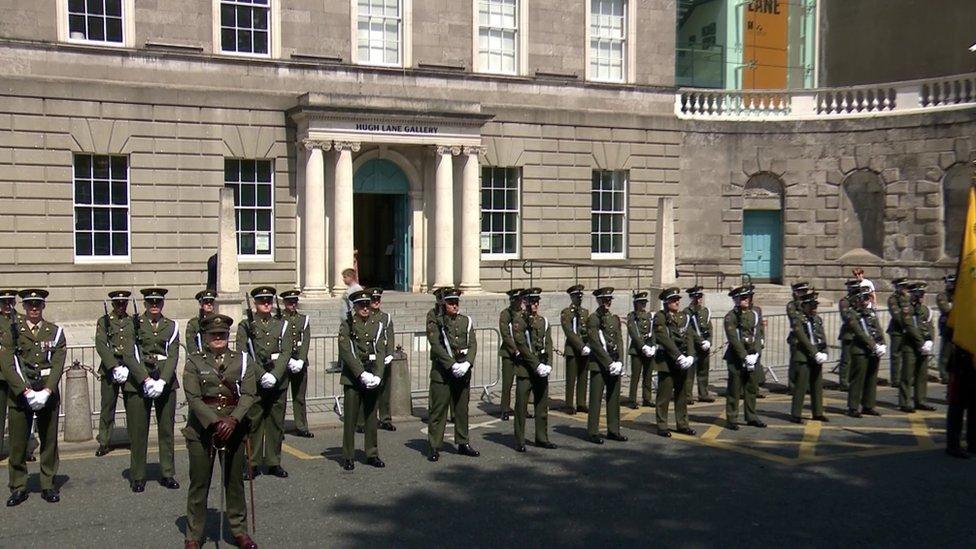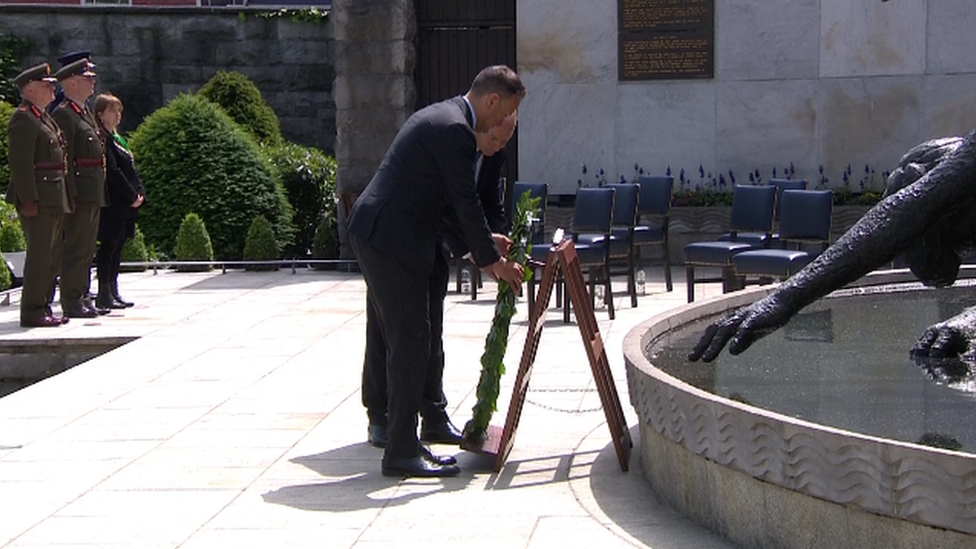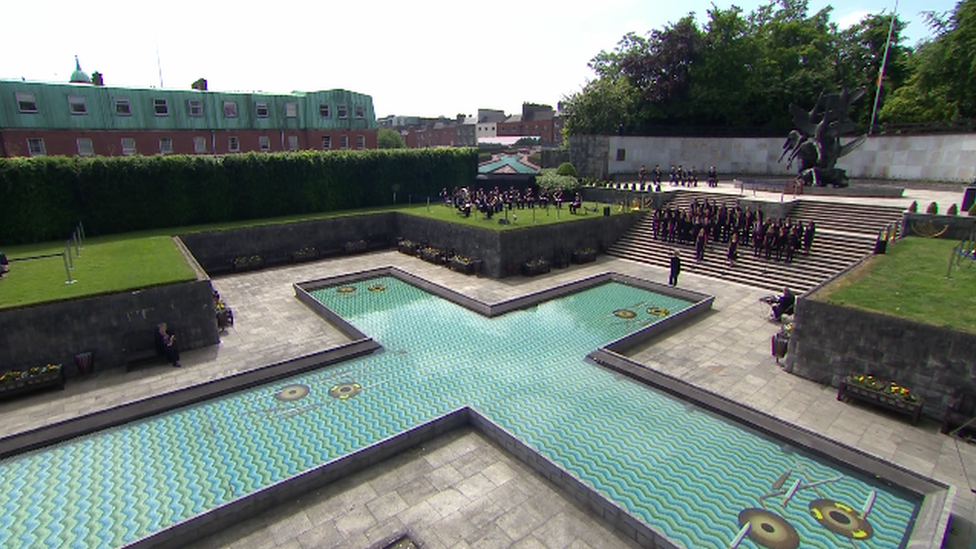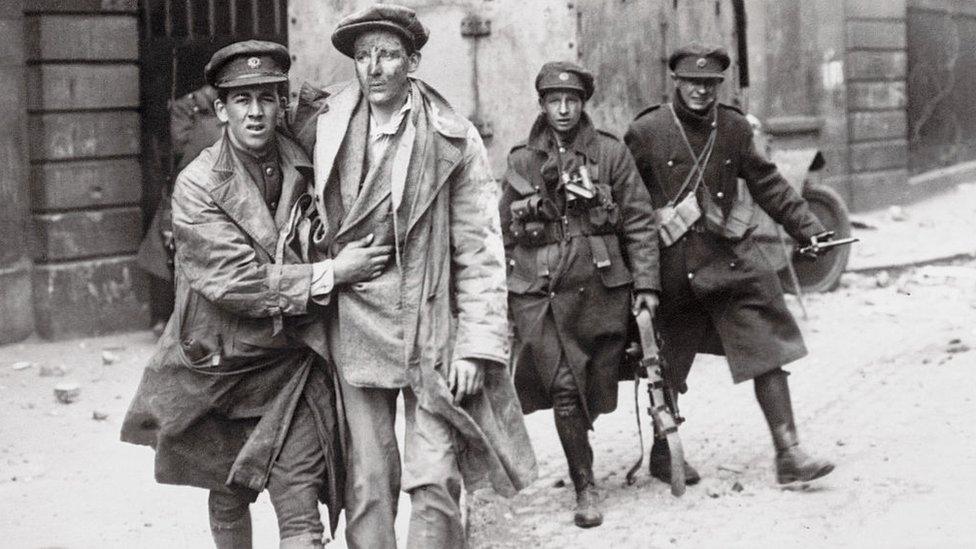Irish Civil War: Ceremony marks 100 years since conflict ended
- Published

The event marked 100 years since the Irish Civil War ended
Relatives of those killed in the Irish Civil War attended a commemoration in Dublin to mark 100 years since the conflict ended.
Taoiseach (prime minister) Leo Varadkar and tánaiste (deputy prime minister) Micheál Martin laid a wreath in the Garden of Remembrance.
The conflict began on 28 June 1922 and ended on 24 May 1923.
About 2,000 people are estimated to have died, including key figures such as Michael Collins and Cathal Brugha.
Each council area in the Republic of Ireland was allocated five places, to allow close relatives of those directly affected by the Civil War to attend.
The conflict was between forces which supported the treaty signed between the revolutionary Irish Republic and the United Kingdom to end of the Irish War of Independence, and those who opposed it.

Taoiseach Leo Varadkar and Tánaiste Micheál Martin laid a wreath in the Garden of Remembrance
Mr Varadkar leads Fine Gael, a political party descended from the pro-Treaty forces, while Mr Martin's Fianna Fáil is descended from the anti-Treaty forces.
For decades after the Civil War ended the parties were the two largest in the state and were bitter rivals, but since 2020 they have governed together in a coalition.
Some counties such as County Longford also held their own Civil War commemorations on Wednesday on the on the date of the centenary.
The Dublin event was part of the Republic of Ireland's official Decade of Centenaries programme, which began in 2012.
Other commemorations due to take place later in the year as part of the programme, are the centenaries of the Irish Free State joining the League of Nations and of poet WB Yeats winning the Nobel Prize for Literature.
Past commemorations have included the centenaries of the Ulster Covenant, World War One and the Easter Rising.

The event took place at the Garden of Remembrance in Dublin
What was the Irish Civil War?
The Civil War broke out after the ratification of the Anglo-Irish Treaty, which brought an end to the Irish War of Independence.
The Treaty, negotiated and signed by representatives of the British government and an Irish delegation, created the Irish Free State, which would become independent of the United Kingdom but would remain part of the British Empire with the King as its head of state.
Northern Ireland, which had come into existence in 1921, was given the ability to opt out of the new Free State, which its unionist government chose to do.
The treaty was hugely divisive, particularly because members of its new Dáil (parliament) would have to swear an oath of allegiance to the monarch.
As a result, much of the country was split into pro or anti-Treaty camps.
The pro-Treaty faction, led by Michael Collins and Arthur Griffith who were part of the Irish delegation, argued that the Treaty was a stepping stone to full independence.
The anti-Treaty faction, led by Éamon de Valera, believed it was unacceptable.
This led to war breaking out in June 1922, developing into a guerrilla-style conflict, with tit-for-tat attacks and killings across the state.
Many high profile figures were killed including Michael Collins on the pro-Treaty side and Liam Lynch and Cathal Brugha on the anti-Treaty side.
By the spring of 1923 anti-Treaty forces became increasingly aware that they could not win
The Civil War came to an end on when de Valera and chief of staff of the anti-treaty Irish Republican Army Frank Aiken issued a joint declaration for a cessation of hostilities.
Related topics
- Published7 January 2022

- Published16 December 2021

- Published1 January 2022
